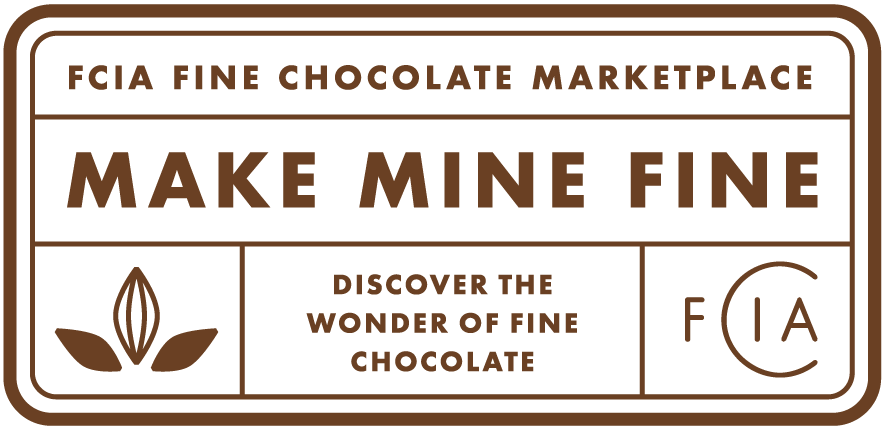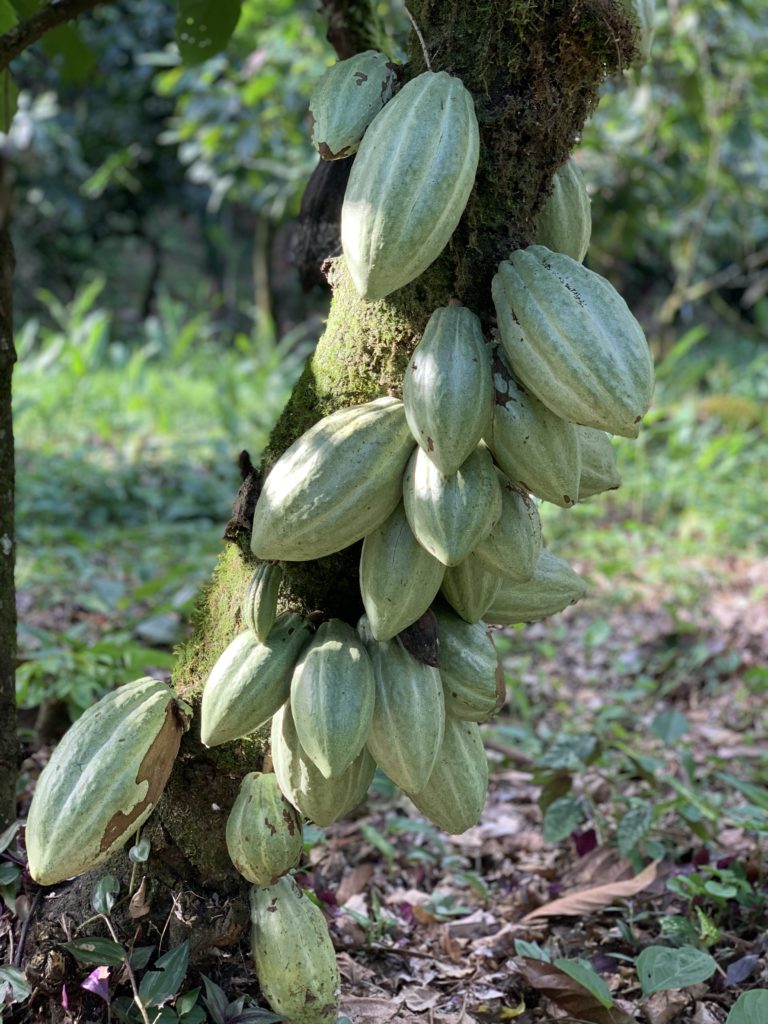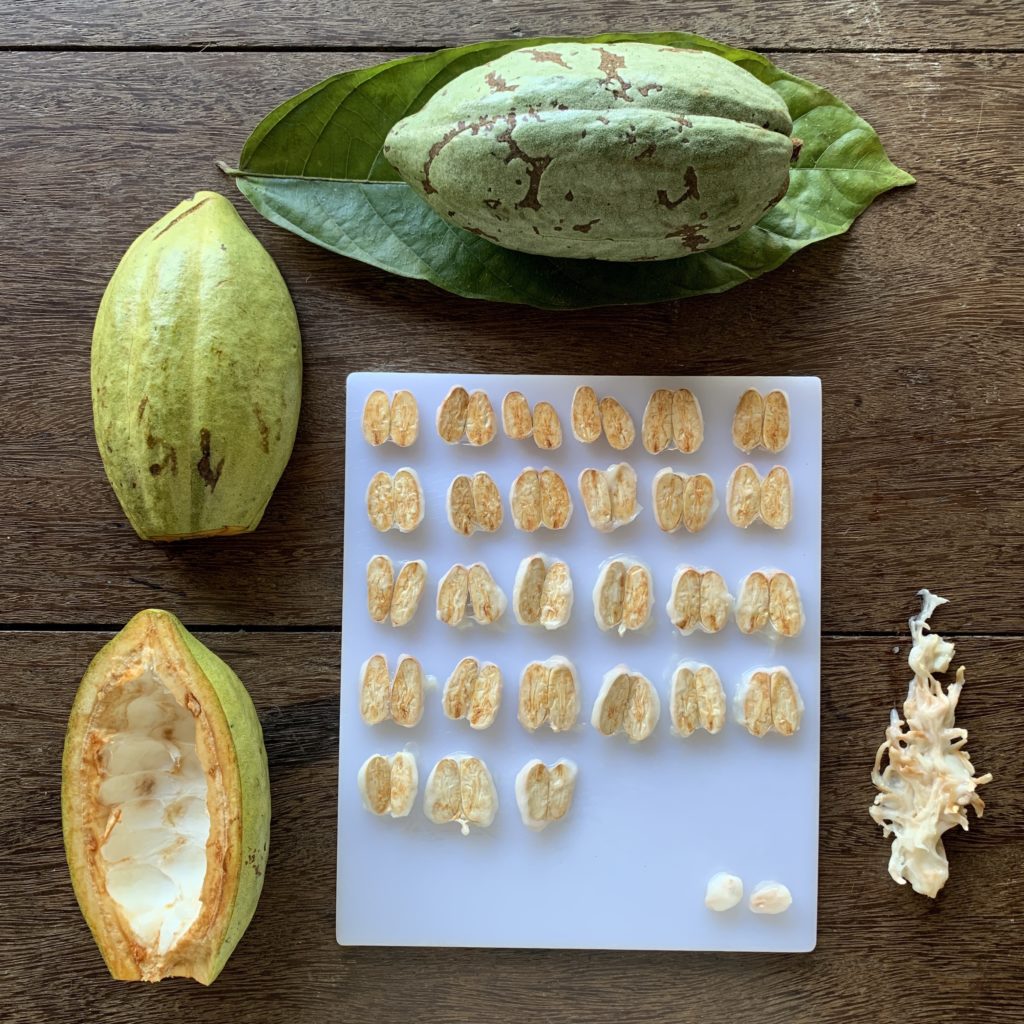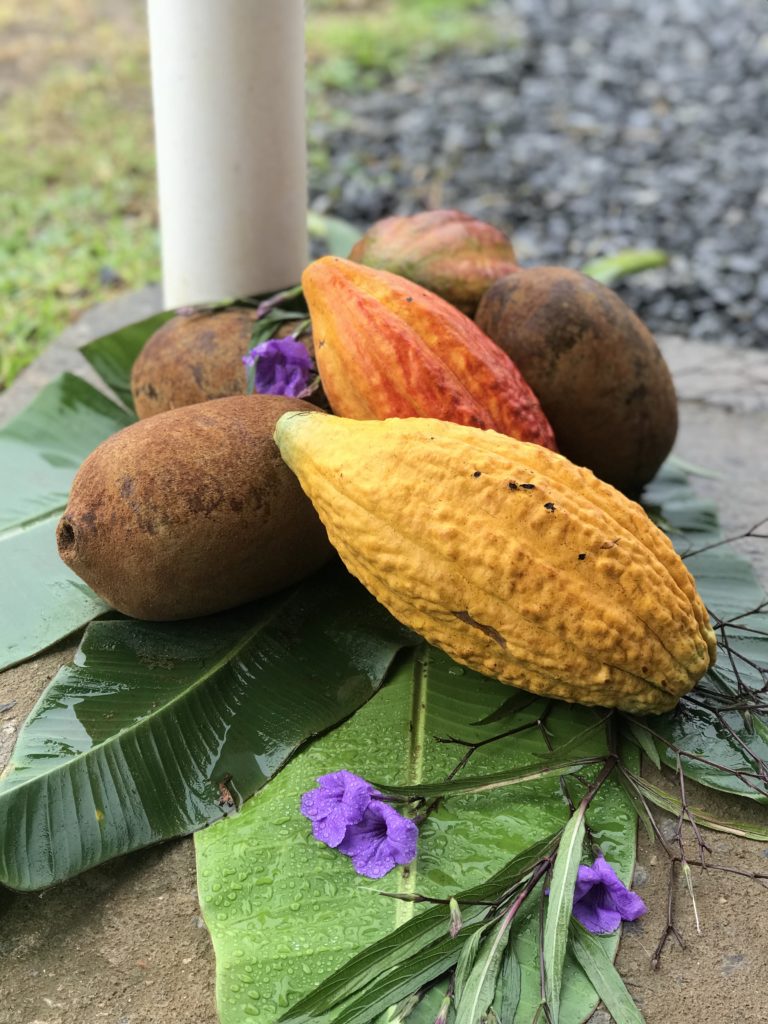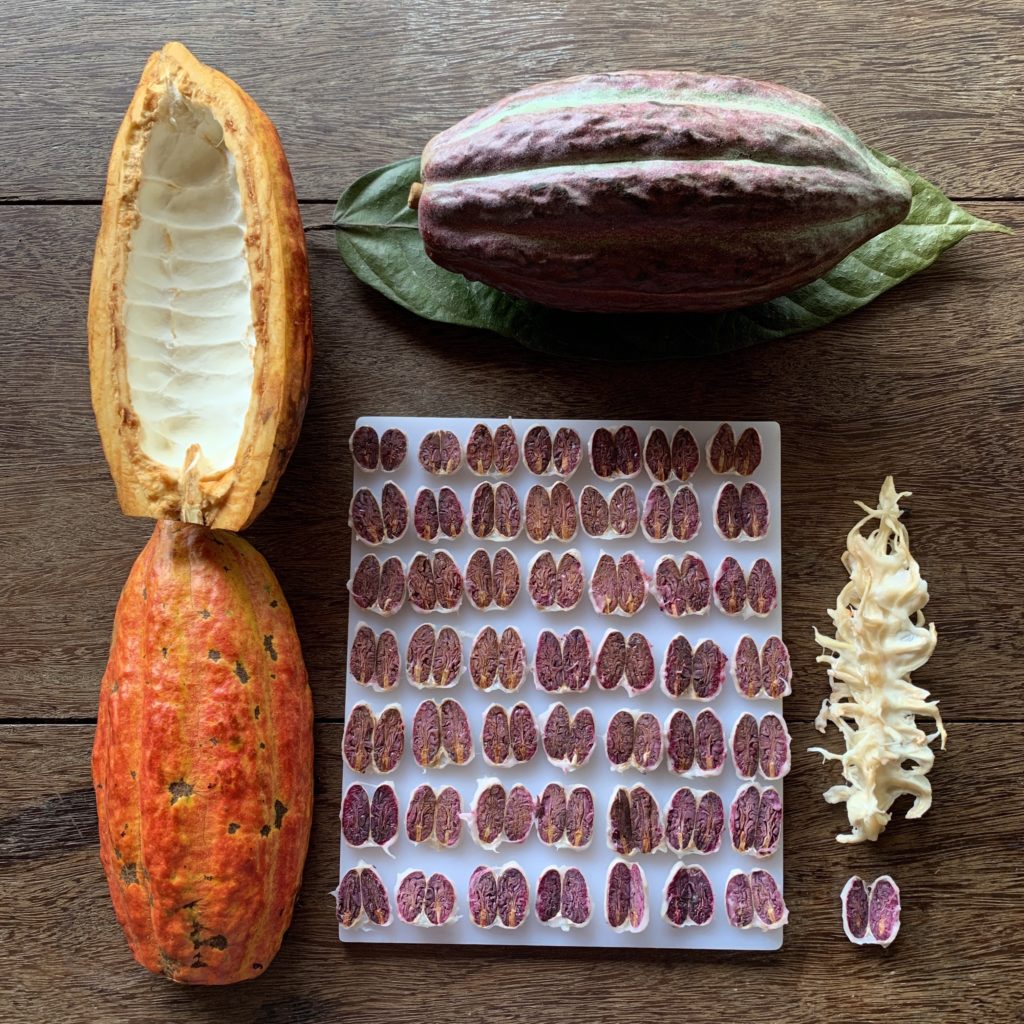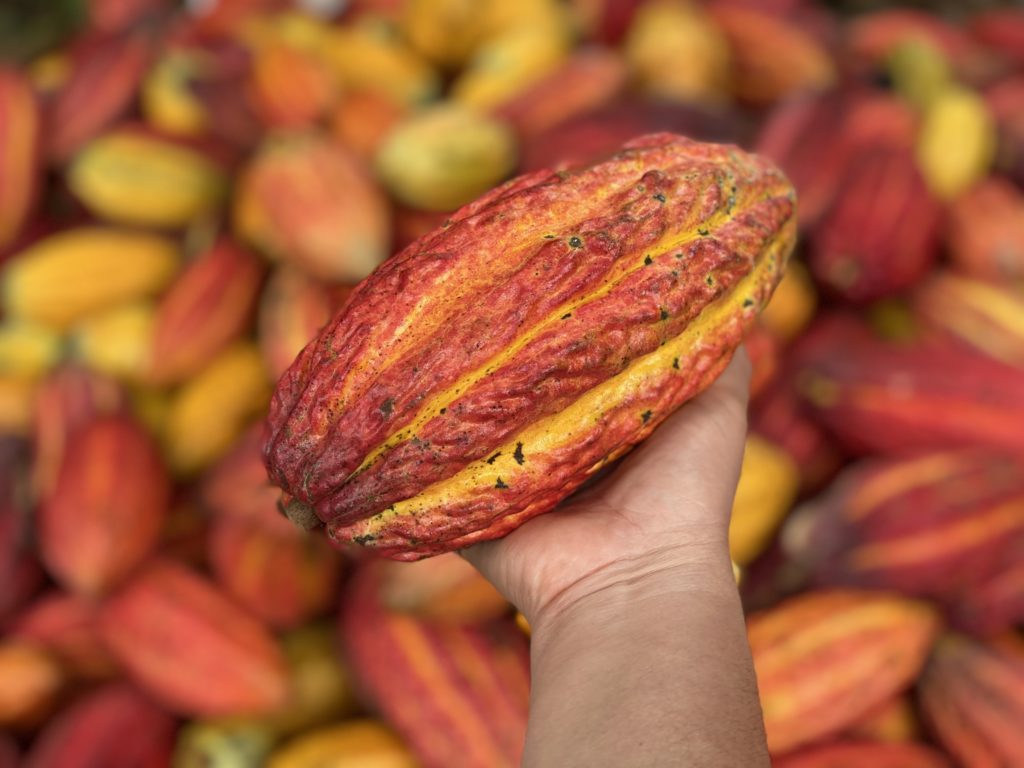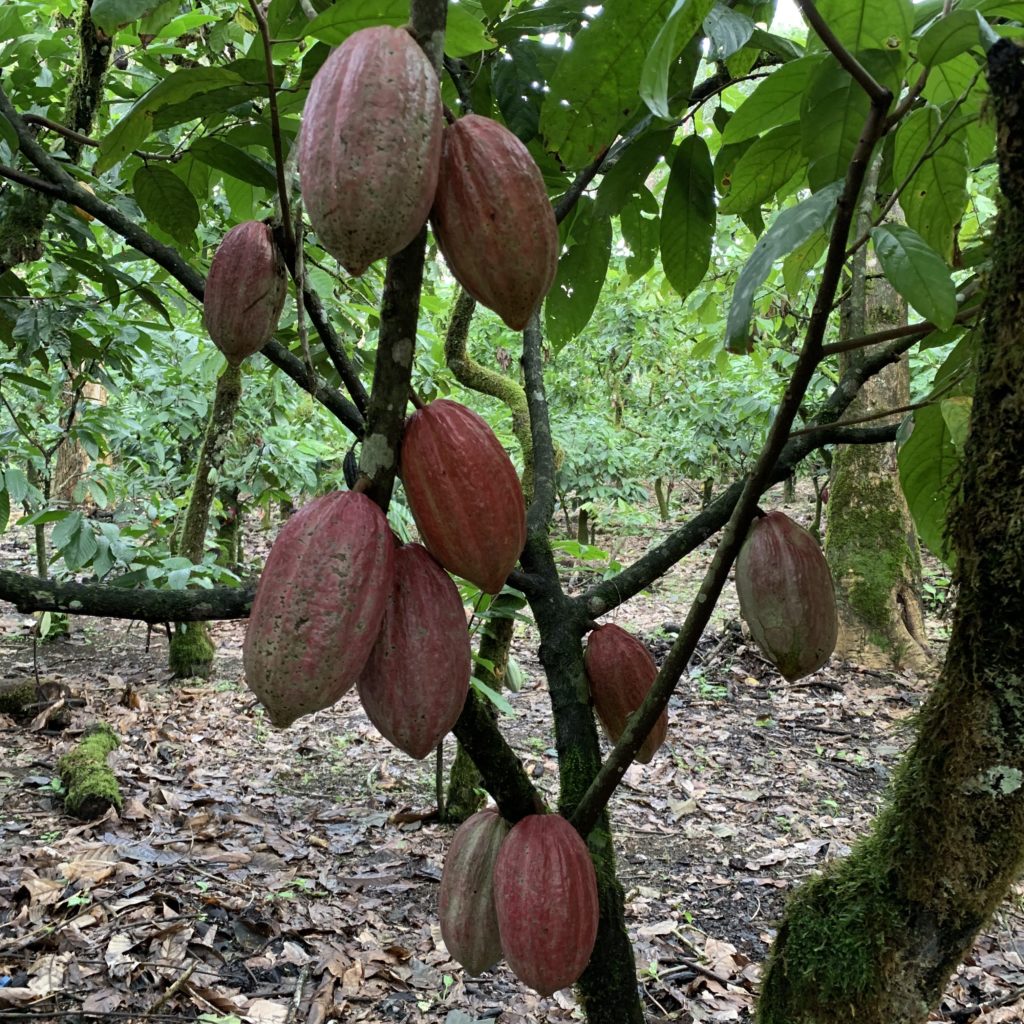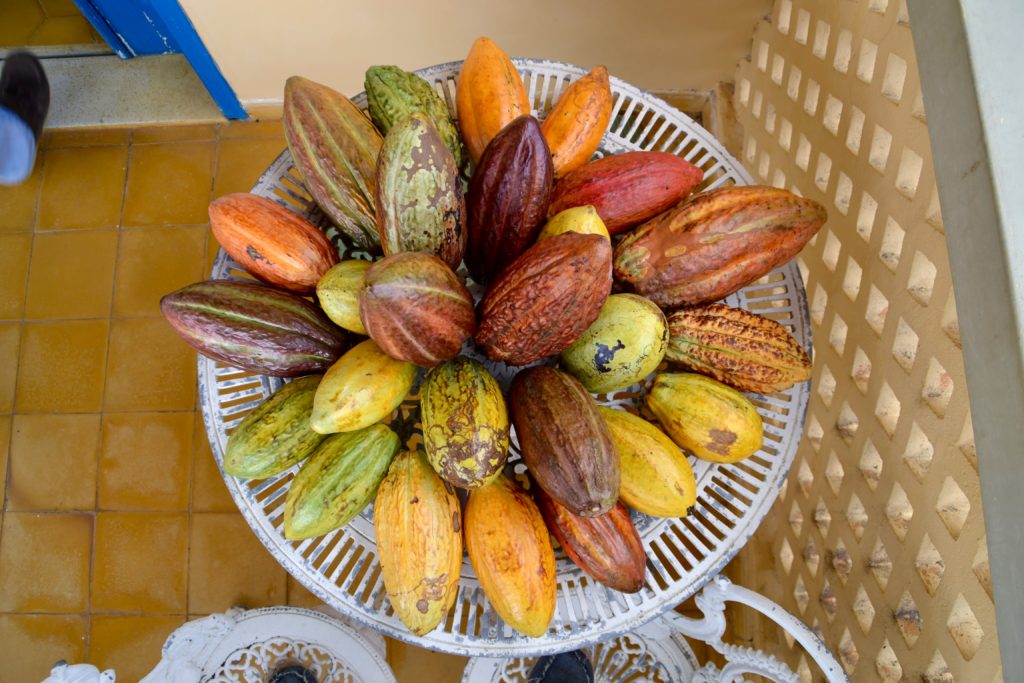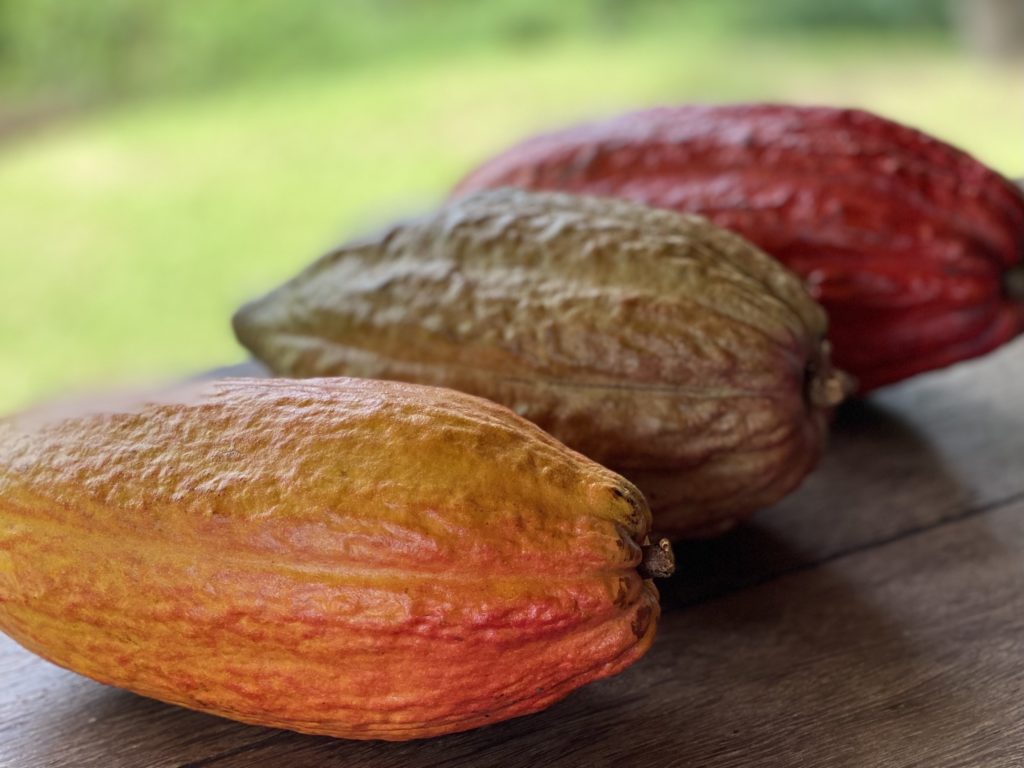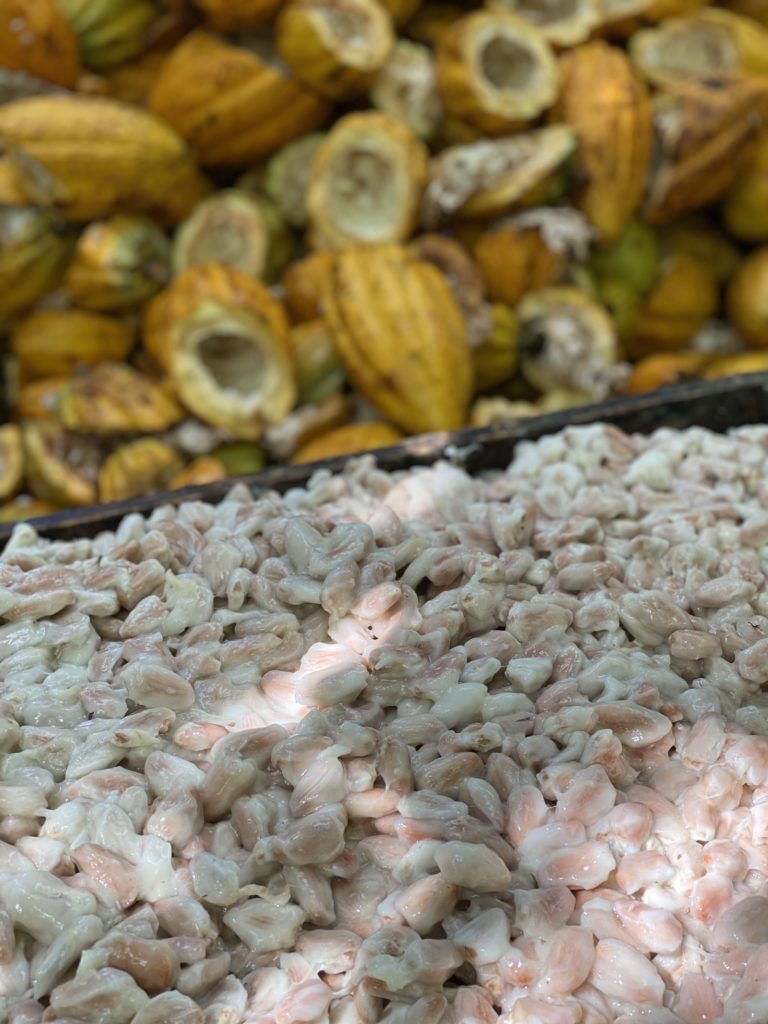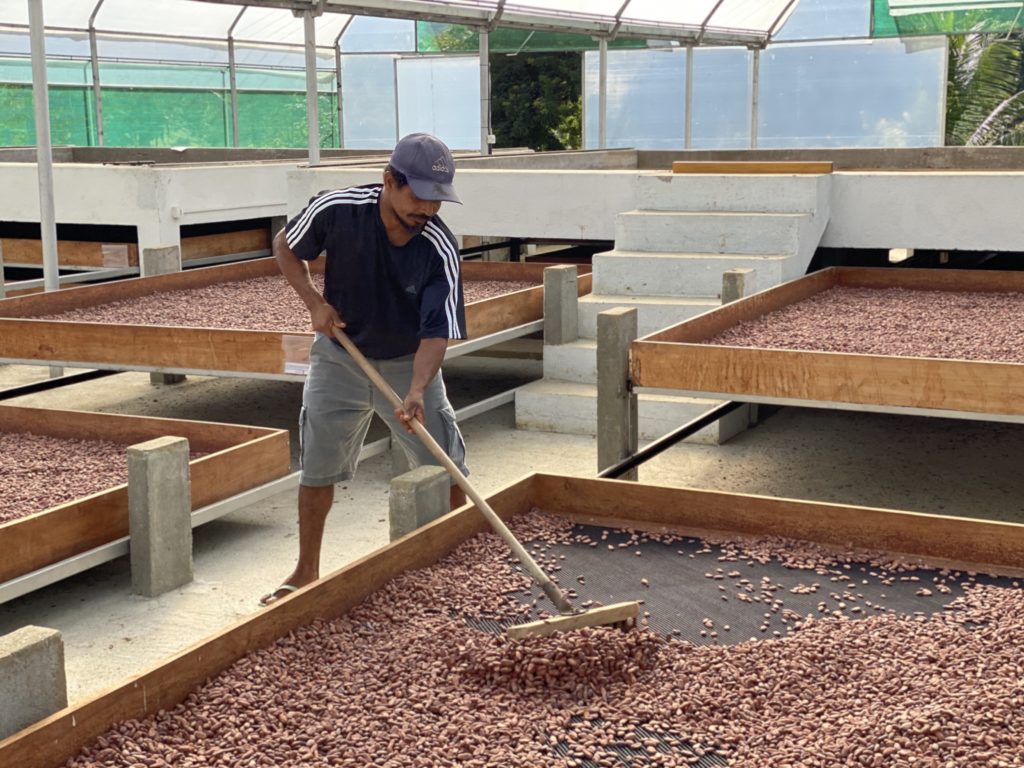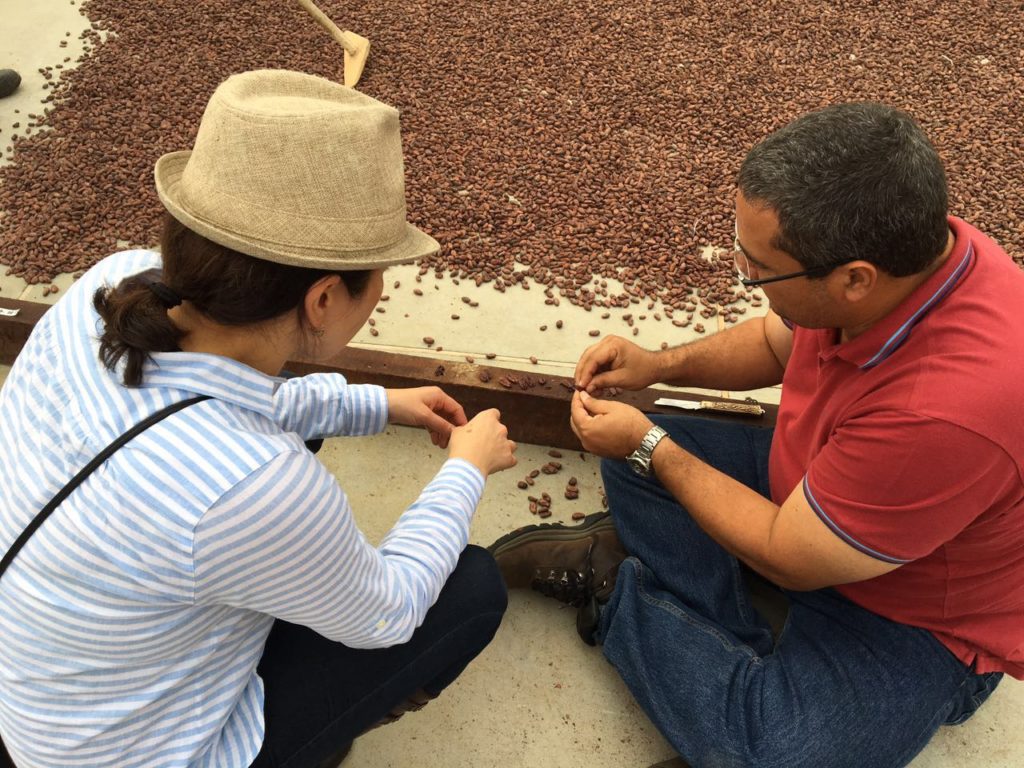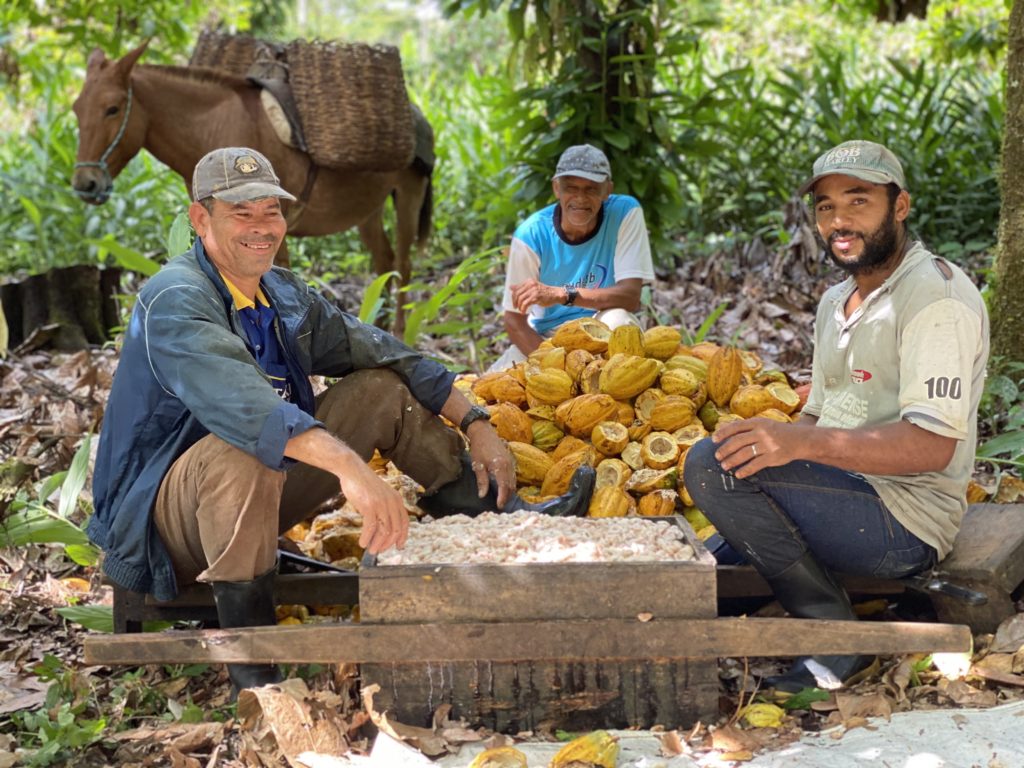At a Glance
- Population: 214 million
- Capital: Brasília
- Rural Population: 15 %
- Median Age: 30 years
- Cocoa Production: 190,000 tons/year
- Production ranking: 7th
- Total area planted: 700,000 ha
- Total farmers / farms: 90,000
- Average farm size: 5 – 10 ha
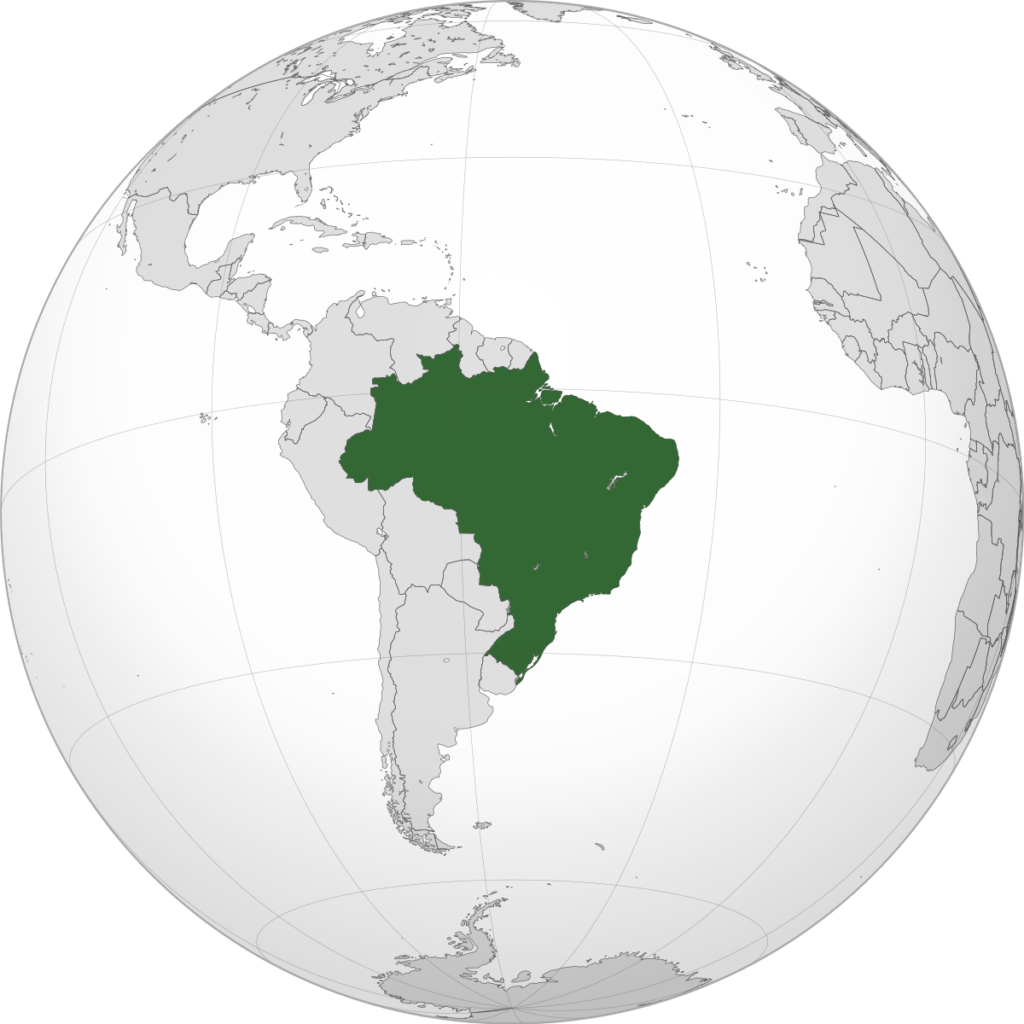
History of Cocoa
Cacao has always played an essential role in the Brazilian agricultural economy. Brazil used to produce approximately 400,000 tons of cocoa beans annually in 1980s, but today it produces less than 200,000 tons and has to import beans to satisfy its domestic demand. This ongoing decline was due to the drop in prices and the spread of Witches’ Broom, a fungal disease, in the sector. In the 1990s, Brazil hit an all-time low cacao production of 90,000 tons per year. The financial impact for farmers was enormous and contributed to the loss of thousands of jobs. The state of Bahia, where cacao had been one of the important economic contributors, was hit the hardest.
With the support of Centro de Pesquisas do Cacau (CEPLAC), new hybrids of cacao varieties were found to help Brazil recover from the impact.
The research focus in the 1990s and early 2000s was on regaining cacao production volume, so little attention was paid to quality and flavor profile. Brazil has historically not been known as a producer of fine quality cacao. Its local industry also produced more commercial chocolate with less demand for flavor.
However, over the last ten years, globally and locally Brazil has seen demand for fine flavor cocoa increase by 10%. In line with global market trends, Brazilian chocolate consumers now seek higher quality. They are willing to pay more to support small cacao producers in social and environmental aspects. As a result, the number of Brazilian chocolate producers has grown significantly, with over 75 companies producing chocolate in smaller batches with Tree-to-Bar and Bean-to-Bar operations. Most importantly, when companies in Brazil make higher-quality chocolate, they also demand quality – fine flavor cacao beans.
Brazilian chocolate companies like Dengo, Mission Chocolate, and Baiani began to enter international chocolate awards in 2015. In 2017, Brazil received 23 awards, and by 2018 Brazilian award recognitions had doubled to 64. Each year, more chocolate companies develop chocolates with fine cocoa that can compete internationally with the finest cocoas and chocolates of the world.
Cacao Timeline
- 1746 – Forastero seeds coming from the Amazon basin were first noticed and planted in Rio Padro in Bahia.
- 1900 – Beginning of more commercial cacao cultivation.
- 1931 – Instituto de Cacau was formed in Bahia.
- 1957 – Centro de Pesquisas do Cacau (CEPLAC), a governmental institution of cacao crop development, was formed.
- 1957 – Associação Brasileira da Indústria de Chocolates, Amendoim e Balas (ABICAB), an association of chocolate, peanut, and sweets industries, was founded.
- 1989 – Vassoura de Bruxa, a fungal disease known as the Witches’ Broom, led to a crisis in the cacao production sector.
- 2004 – Association of the Cocoa Processing Industry (AIPC), an industry association of grinders for companies like Barry Callebaut, Cargill, and Olam, was founded.
- 2017 – The Bean-To-Bar Association Brazil was founded by seven makers. Today it includes more than 40 makers.
- 2018 – World Cocoa Foundation started its program, Cacao Action, in Brazil.
- 2020 – Brazil cacao bean production reaches 190 kmt annually.
Brazil has more women chocolate makers than any other country.
Flavor Attributes
Brazil is a continental country, with cacao production areas spanning from the Atlantic coastal forest areas all the way into the rural Amazon forest areas. We can find a lot of varieties and flavor attributes in Brazil. In the southern part of Bahia (“Sul da Bahia”) alone, there are several new varieties, from the more standard productive type of clones like the CCN51 to the Trinitário varieties. The Trinitário varieties were singled out throughout the early 2000s as part of research conducted by CEPLAC to find more Witch’s Broom resistant and more productive types, while carrying a more sensorial appeal for chocolate making.
Brazil has new sensorial elements in its cacao that bring a variety of complex flavors in each region. Bahia has more flavors like citric fruits, brown dried fruits like plum and raisins, honey, molasses, various spices, and even floral notes. In Para, we discover more flavor profiles of cooked chocolate like brownies, cakes, and fudge. In the Amazon, the wild cacao can carry more savory notes like black olive.
Also worthy of note is Pará or Parazinho, a unique Brazilian Forastero/Amelonado variety, introduced in Bahia in the 18th and 19th centuries from the Lower Amazon region.
Farming Systems
The traditional farms in Bahia were originally family-owned estates, sometimes composed of more than one farm. In recent decades, this has changed and the majority of farms in Brazil are classified as small or mid-sized, with an average of 5 – 10 ha.
Some of the larger and newer cacao areas are planted using the “pleno sol” system, where the cacao trees grow exposed to full sun conditions without shade and with good ferti-irrigation systems. The states of Espirito Santo and Para are more known for this and have on average close to 1 mt/ha higher yields.
In the more traditional regions of Bahia and the Amazon, the Cabruca system is still the most common farming system, with a very low average yield of 0.5 mt/ha. Cabruca is an agroforestry system in which cacao trees are planted under the canopy of native rainforest trees. This is more common in the southern part of Bahia within the Atlantic Forest region, and it contributes greatly to the preservation of the rich biome that is native to this area.
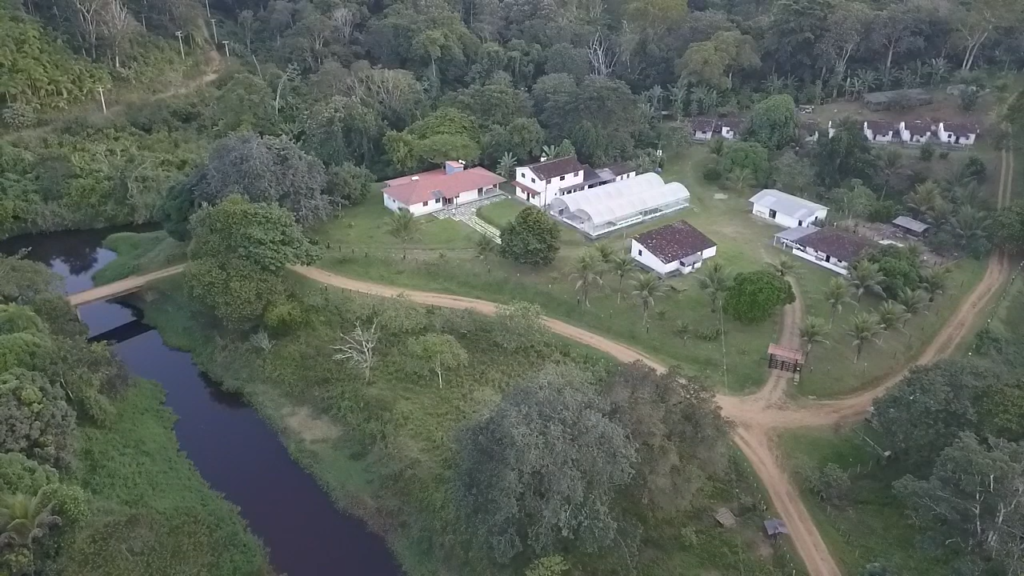
According to the Guinness Book of World Records, Brazil had the world’s largest chocolate sculpture. It was created by Equipe da Casa do Chocolate in 2018.
Learn More About Brazil’s Cacao
Contacts in Country

Rob Willemsen
Founder & CEO | HB Consultoria
Phone: +55 11 93 00 00 702
rob@hbconsultoria.net.br
www.hbconsultoria.net.br
